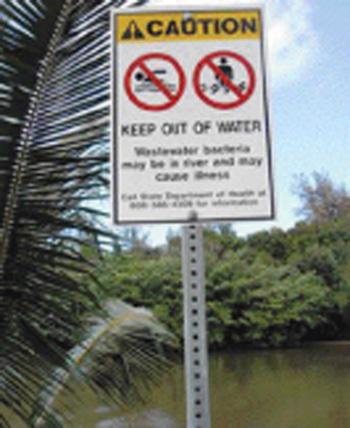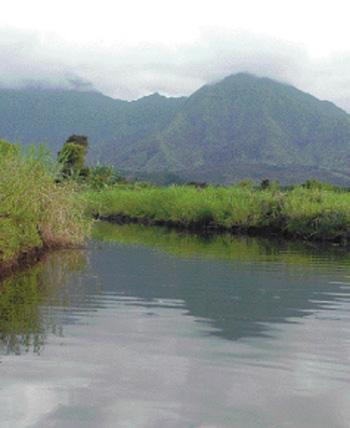HANALEI — A comprehensive study completed nearly two years ago at Stanford University found that some of the water samples collected from Hanalei River contained bacteria of human fecal origin. Editor’s note: This is the fourth article in an ongoing
HANALEI — A comprehensive study completed nearly two years ago at Stanford University found that some of the water samples collected from Hanalei River contained bacteria of human fecal origin.
Editor’s note: This is the fourth article in an ongoing series that looks at water quality on Kaua‘i.
HANALEI — A comprehensive study completed nearly two years ago at Stanford University found that some of the water samples collected from Hanalei River contained bacteria of human fecal origin.
The study — “Sources of Nutrients and Fecal Indicator Bacteria to Nearshore Waters on the North Shore of Kaua‘i” — was prompted by concerns over consistently high levels of fecal indicator bacteria enterococcus that far surpassed what the state deems “acceptable.”
A surface protein on the enterococcus was used to “investigate whether the observed bacteria originated from a human source,” the study says.
By identifying how the bacteria enters nearshore waters, water quality issues can begin to be addressed, especially regarding how it ultimately affects Kaua‘i’s coral reefs, the abstract says.
“The water, full of bacteria and sediment, reaches the reef which has dire consequences for the creatures that live there and we subsist on,” Save Our Seas President Paul Clark said.
The Department of Health’s Clean Water Branch Monitoring and Analysis Section Chief Watson Okubo said the study is inconclusive.
An analysis completed in 2008 says the surface protein is an “unreliable indicator of human fecal contamination” because there are “differential occurrences of the gene in the environment.”
“In other words, esp (the surface protein located on enterococcus) is somewhat ubiquitous and not a useful tool in discriminating contaminant sources (i.e., human versus non-human),” DOH spokesperson Janice Okubo said.
But the question remains: Have non-human populations risen as quickly as human to cause the correlated spike in bacteria levels?
Repeated requests for further comment from the DOH were unsuccessful.
Okubo said last month that the Clean Water Branch would soon be losing four of its 10 staff members under the state’s proposed layoffs.
“Concerns are rising about the bacterial pollution present in these renowned recreational waters,” the Environmental Protection Agency says on its Web site in regards to the Hanalei River and Bay.
Data collected “now suggests a correlation between low and high tidal action and the higher bacterial levels suggesting a ‘flushing’ of septic systems in the Hanalei community. Under study now is a possible link to heavy rain events as well,” the EPA says.
All tests conducted on Kaua‘i and elsewhere essentially point to human contamination, water quality expert Dr. Carl Berg of Surfrider Foundation Kaua‘i said, but the “silver bullet hasn’t appeared yet.”
New methods are being used for bacterial analysis and the EPA will soon be “forced” to come up with something to help determine where pollution around the world stems from. This is due to a “beach water” lawsuit filed by the Natural Resources Defense Council.
Critics claim enterococcus is not the best indicator of fecal matter.
“Everybody is out there working like mad” to come up with an “improved” method of testing, Berg said.
Discovering an indicator that is “highly correlated with health risk” and one that is timely and affordable is the key, he said, adding that it could be any day now.
The Hanalei River was recently selected as one of 14 American Heritage Rivers, according to the EPA. The river is approximately 16 miles long from its source to the ocean and is among the five largest rivers in Hawai‘i.
“It is a free-flowing river terminating in an estuarine bay, the third largest and most pristine in Hawai‘i,” the EPA states on its Web site.
For more information, visit www.epa.gov/rivers/update/nav_news.html#hanalei.
Look for upcoming TGI articles exploring Kaua‘i’s drinking water quality, Wailua wastewater treatment facilities and agricultural runoff.
• Coco Zickos, business and environmental writer, can be reached at 245-3681 (ext. 251) or czickos@kauaipubco.com.



